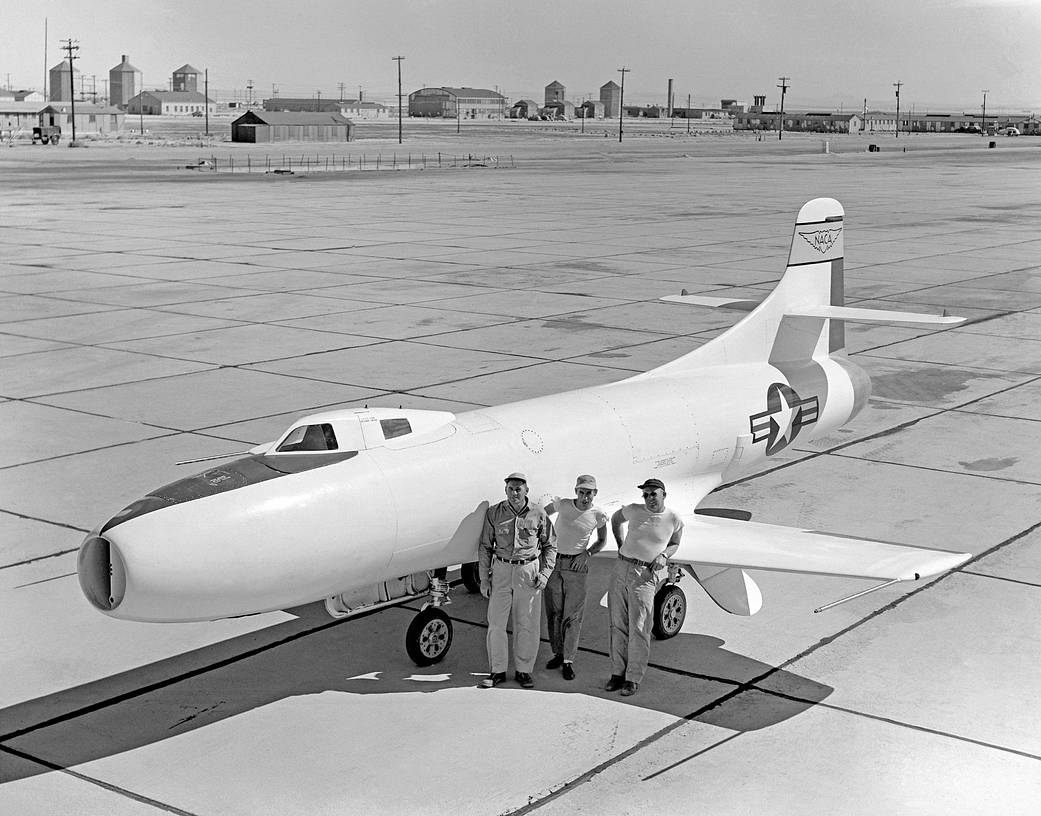The D-558-I “Skystreaks” were among the early transonic research airplanes like the X-1, X-4, X-5, and XF-92A. Three of the single-seat, straight-wing aircraft flew in a joint program involving the National Advisory Committee for Aeronautics (NACA), the Navy-Marine Corps, and the Douglas Aircraft Co. from 1947 to 1953. In the process, the Skystreaks set two world speed records.
The division of responsibility among the partners was that Douglas flew a contractor program on the first Skystreak to investigate its performance, handled major maintenance and performed any modifications. The NACA’s Muroc Flight Test Unit, redesignated the High-Speed Flight Research Station in 1949 and now named the NASA Armstrong Flight Research Center, purchased fuel and oil from the Army Air Forces (Air Force after September 1947), provided and installed instrumentation, performed the flight research on the number two and three aircraft, and took care of routine flight maintenance and inspection on them. The Navy paid the expenses of Douglas Aircraft, including engine overhaul and replacement, and its pilots did some of the flying.
The (Roman numeral) I in the aircraft’s designation referred to the fact that the Skystreak was the phase-one version of what had originally been conceived as a three-phase program, with the phase-two aircraft having swept wings. The third phase, which never came to fruition, would have involved constructing a mock-up of a combat-type aircraft embodying the results from the testing of the phase one and two aircraft…Learn more
The D-558-I #1 is currently on display at the National Naval Aviation Museum in Pensacola, Florida.



























